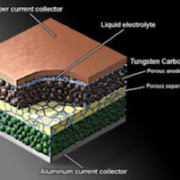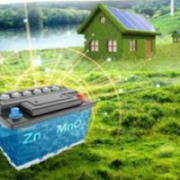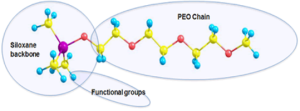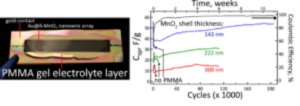Each of the three technologies mentioned above has their own challenges:
- Lithium is an expensive rare Earth element which means that the cost of Lithium batteries is very high. Further, most of the mines which provide ore from which Lithium is extracted world-wide are in Chinese hands.
- Sodium ion technology is still in its infancy and it will take time before it can start replacing Lithium as the main ingredient in automobile batteries. The power density of Sodium is much less than that of Lithium, though research is ongoing to narrow the difference.
- The Aluminium-Water battery is also a brand new technology, and it will also require time to develop to the level that we can start getting these batteries off the shelf for transportation.
The power required to charge EV batteries in the short term will come mainly from fossil fuelled power plants which will lead to an increase in emissions from power generation. In time of course, this will be mitigated by the Government of India’s laudable push toward green power, based on solar energy and wind.
Another technology which provides energy for EVs, is the Hydrogen Fuel Cell, which does away with batteries completely. Hydrogen is stored in the vehicle at high pressure, and Oxygen is taken from the atmosphere. The two gases combine in the Fuel Cell to generate electricity which runs the car motor. Therefore, no batteries are required. At first glance, it seems to be a dangerous proposition to travel in a car with a tank full of compressed Hydrogen at very high pressure. However, the technology for Hydrogen storage is well developed, especially in Japan and South Korea, and Fuel Cell cars are as safe as cars which run on hydrocarbon fuels.
It is clear therefore, that one step in the right direction is to start producing EVs in large quantities. The only issue is the amount of investment required by the Government to develop the infrastructure country-wide, either for battery charging, or Hydrogen refilling, and the investment required by the Automobile majors to develop cheaper technologies so that EVs sell in large numbers.
The good news is that there is a concerted effort across the world to come up with alternatives to current technologies for automobile batteries. Here are the 5 most promising alternatives:
 NanoBolt lithium tungsten batteries
NanoBolt lithium tungsten batteries
Working on battery anode materials, researchers at N1 Technologies, Inc. added tungsten and carbon multi-layered nanotubes that bond to the copper anode substrate and build up a web-like nano structure. That forms a huge surface for more ions to attach to during recharge and discharge cycles. That makes recharging the NanoBolt lithium tungsten battery faster, and it also stores more energy.
—
 Zinc-manganese oxide batteries
Zinc-manganese oxide batteries
How does a battery actually work? Investigating conventional assumptions, a team based at DOE’s Pacific Northwest National Laboratory found an unexpected chemical conversion reaction in a zinc-manganese oxide battery. If that process can be controlled, it can increase energy density in conventional batteries without increasing cost. That makes the zinc-manganese oxide battery a possible alternative to lithium-ion and lead-acid batteries, especially for large-scale energy storage to support the nation’s electricity grid.
—
 TankTwo String Cell™ batteries
TankTwo String Cell™ batteries
A barrier to the use of electric vehicles (EVs) is the slow recharging process. Seeking a way to turn hours into minutes, TankTwo looked at modularizing a battery. Their String Cell™ battery contains a collection of small independent self-organizing cells. Each string cell consists of plastic enclosure, covered with a conductive material that allows it to quickly and easily form contacts with others. An internal processing unit controls the connections in the electrochemical cell. To facilitate quick charging of an EV, the little balls contained in the battery are sucked out and swapped for recharged cells at the service station. At the station, the cells can be recharged at off-peak hours.
 Ganosilicon electrolyte batteries
Ganosilicon electrolyte batteries
A problem with lithium batteries is the danger of the electrolyte catching fire or exploding. Searching for something safer than the carbonate based solvent system in Li-ion batteries, University of Wisconson-Madison chemistry professors Robert Hamers and Robert West developed organosilicon (OS) based liquid solvents. The resulting electrolytes can be engineered at the molecular level for industrial, military, and consumer Li-ion battery markets.
 Gold nanowire gel electrolyte batteries
Gold nanowire gel electrolyte batteries
Also seeking a better electrolyte for lithium-ion batteries, researchers at the University of California, Irvine experimented with gels, which are not as combustible as liquids. They tried coating gold nanowires with manganese dioxide, then covering them with electrolyte gel. While nanowires are usually too delicate to use in batteries, these had become resilient. When the researchers charged the resulting electrode, they discovered that it went through 200,000 cycles without losing its ability to hold a charge. That compares to 6,000 cycles in a conventional battery.
———–
Apart from the above research and development, there are likely to be many more new technologies which have not yet been announced, and this bodes well for the future of the EV. However, in spite of this ongoing effort, the mass adoption of electric vehicles along with development of the extensive infrastructure required, is a relatively long-term program. It is also very clear that it will be many years before enough EVs are on our roads to have any significant effect on vehicle related emissions.
The number of vehicles (4 or more wheels) on Indian roads powered by internal combustion engines is approximately 4.5 crores (1.5 crore commercial vehicles and 3.0 crore passenger vehicles). This figure is expected to cross 6.0 crores by the year 2030. There are also a very large number of diesel generators operating all across the country. Every single one of these vehicles and generators is, and will continue to be a source of air pollution.
Once a vehicle is sold and is on the road, and/or a diesel generator has been installed and is working, there is no technology available to reduce emissions from these entities, Till now!


 NanoBolt lithium tungsten batteries
NanoBolt lithium tungsten batteries Zinc-manganese oxide batteries
Zinc-manganese oxide batteries TankTwo String Cell™ batteries
TankTwo String Cell™ batteries Ganosilicon electrolyte batteries
Ganosilicon electrolyte batteries Gold nanowire gel electrolyte batteries
Gold nanowire gel electrolyte batteries